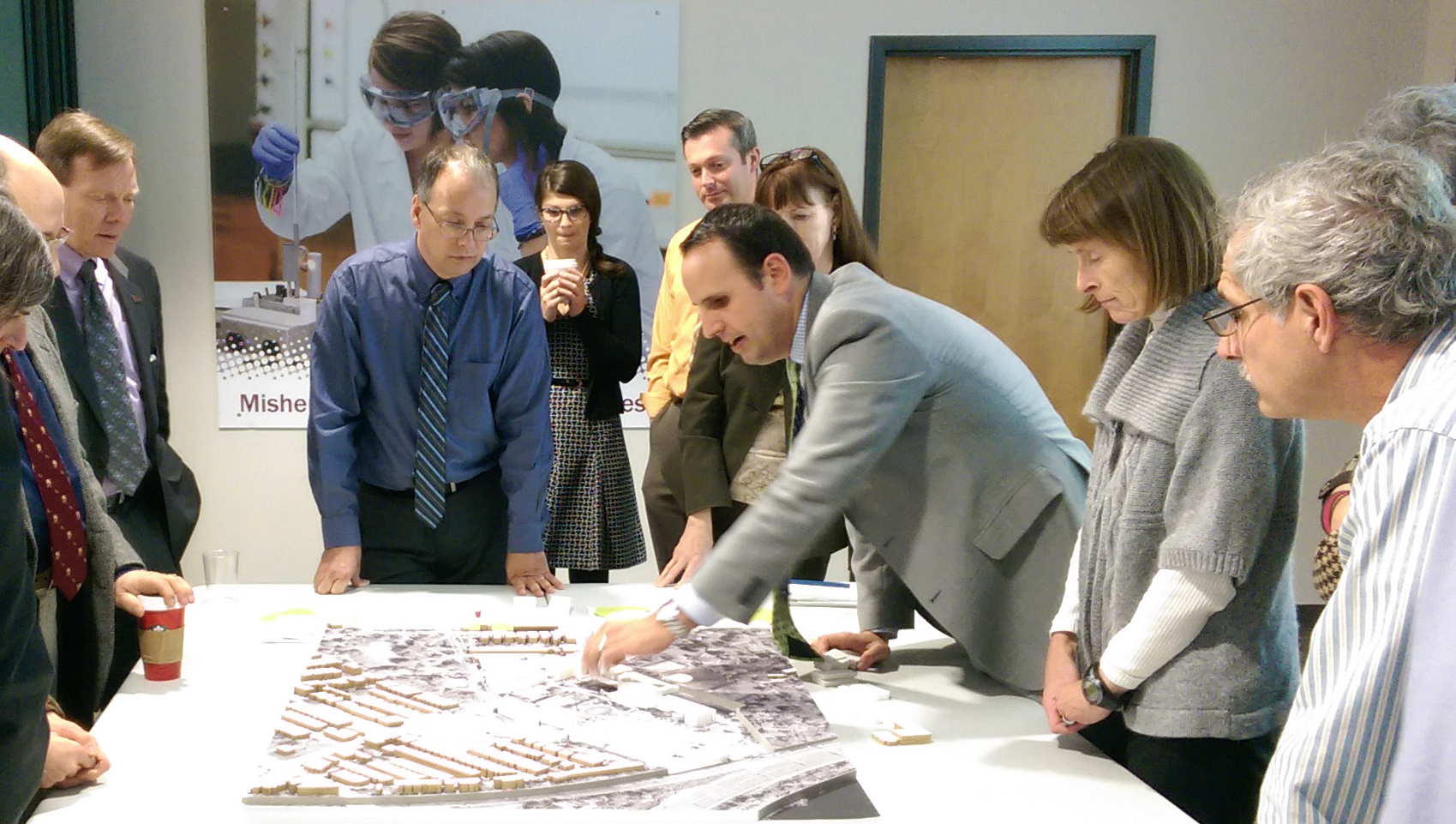Patrick Details Emory Space Planning at SCUP
Tyler Patrick discusses space planning at Emory University at the annual meeting of the Society for College and University Planning (SCUP)
 Sasaki
Sasaki

The world isn’t static; neither is a framework plan. As context and constraints evolve in a university setting, it’s important to have a structural understanding of how decisions will be made.
A framework plan provides a methodology for directing change in the physical environment over time. It leverages a college or university’s strategic vision to ensure campus development reinforces mission. A good framework plan strategically positions the institution to make ongoing decisions that maximize impact, while building incrementally towards a greater and grander vision. In this way, a framework plan promotes a process for how to plan rather than determining a strict set of guidelines.
As a result of ongoing strategic planning considerations, any institution of higher education must consider how the campus should evolve as it expands physically and programmatically. How should the campus develop to support the academic mission and enhance a sense of community? How can the campus environment navigate and engage with its neighborhood edges, as well as the broader geographic area? How can campuses celebrate their historic legacy while also supporting modern learning and research?
These challenging questions require the university to adopt an agile frame of mind: one that can respond strategically as new opportunities and ideas emerge. Whereas a traditional plan is typically didactic and static, the framework plan emphasizes a nimble mindset by playing out different scenarios, testing future developments, and keeping the door open for decisions to change over time.

Framework planning prepares institutions to make future decisions while adhering to defined principles
In practice, this means developing a long-term vision grounded in principles and data, in which future options are not foreclosed, and in which every move builds towards a greater goal. It means reaffirming an effective planning process that is designed to accommodate multiple variables, so that new scenarios can emerge and grow.
A framework plan relies on three primary mechanisms: a data-based foundation of insights; a rigorous process for decision-making; and a dynamic tool to facilitate that process. These mechanisms come together to empower leaders by giving them long-term flexibility.
The first mechanism is defined by the application of an integrated, analytical discovery process that synthesizes academic, financial, and physical data to inform planning and design challenges. This transparent process takes a clear-eyed and comprehensive view of the institution as a whole. It lays the groundwork for high-value, high-impact solutions that can transcend the silos sometimes found in universities, help negotiate conflicts, and fundamentally shift decision-making processes. In this way, we can use data to disarm unfounded assumptions and promote greater understanding among stakeholders regarding university decision-making. One prime example of this played out at the University of North Dakota, where faculty insisted there was a dearth of large classrooms on campus. In reality, the data showed that there was actually a surplus of large rooms but they were being improperly scheduled with small section sizes, resulting in rooms that were, on average, only half full. By visualizing this data in an accessible manner, we were able to demonstrate to faculty the real issue, building consensus and buy-in on a recommendation to invest in furniture de-densification in small and mid-size rooms versus the more costly alternative of building new, large classrooms.

Data visualization helps guide the way to solutions that may not have been clear initially
The second mechanism is a series of planning principles. Principle-based planning is about establishing a process that is enduring and flexible, that sets expectations, and that seamlessly accommodates changing conditions and stakeholders. Ideally, planning principles relate strongly to a university’s strategic plan and initiatives. They provide an equitable basis for evaluating capital strategies to ensure that investment aligns with mission. Individual decisions should not preclude others from happening in a comprehensive framework plan, and new ideas should have a place if they fit the established principles. At Northwestern University, a set of planning principles guided the 2009 Framework Plan. In the 2016 update, those same principles endured, and provided the foundation of new scenario exploration. While some of the specific implementation strategies changed, the new recommendations still reinforced the enduring principles established over a decade ago.
The third mechanism is the development of a dynamic capital planning tool that is specifically designed to address the institution’s needs and concerns. The planning tool allows leadership to make fully-informed decisions, quickly and in real-time. While the specifics of a tool are always designed and built through careful consultation and collaboration with the client, we regularly draw on a complex network of university data sources. The power of a good capital planning tool lies in its ability to translate and link disparate datasets into a comprehensive dashboard. This dashboard then allows users to draw upon data quickly, and explore relationships between datasets to answer the question at hand—during the planning process and beyond.
At Emory University, Sasaki is in the process of developing a capital planning tool that will align existing university inputs–such as enrollment and HR data–with physical planning data like deferred maintenance, space inventory, utility life-cycle costs, and parking demand modeling to understand the interrelationships that exist between these variables. We can instantaneously explore questions like: What impact will an increase in faculty and staff have on parking demand? What is the true cost of constructing a new academic building when you factor in the utility enabling and operational costs?
We believe successful planning weaves together academic, financial, and physical considerations to create enduring planning and design frameworks. While the resulting physical framework plan serves as an important guide for campus development, our collaborations focus more on a process that is able to respond to changing circumstances.
Working with client partners like Northwestern University, the University of North Dakota, and Emory University has helped us continue to fine-tune our approach to data-informed planning. As projects grow and develop, we see more opportunities to apply this perspective, and more potential clients already thinking in these terms. A living, breathing framework has the ability to grow and change with an institution, ensuring that opportunities are never wasted and ongoing decision-making is properly supported.
Tyler Patrick discusses space planning at Emory University at the annual meeting of the Society for College and University Planning (SCUP)
A campus master plan transforming living and learning on campus is the underpinning to four new buildings, now under construction
Our space planning projects translate context-driven data into actionable strategies